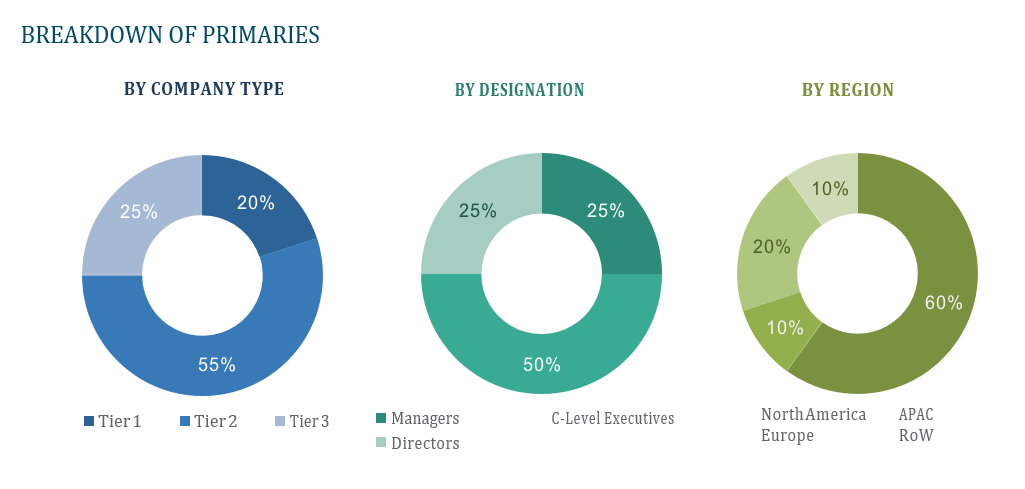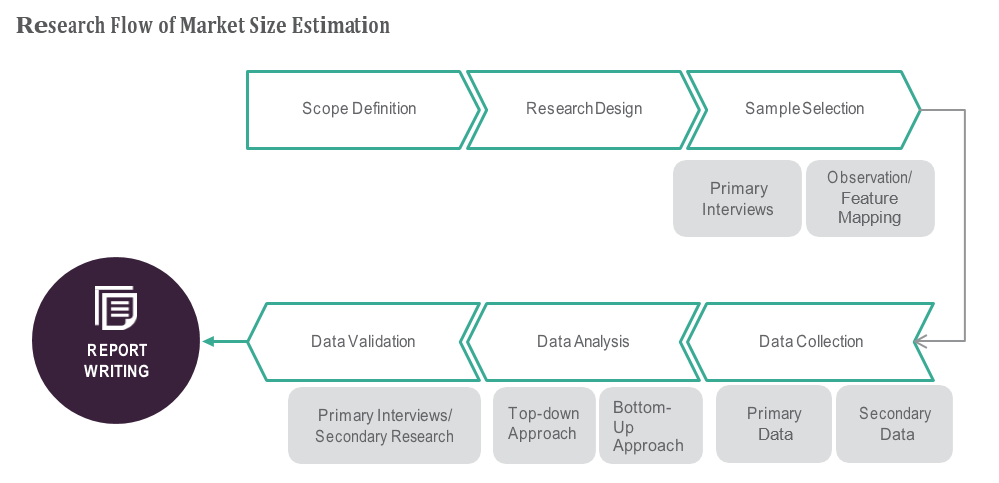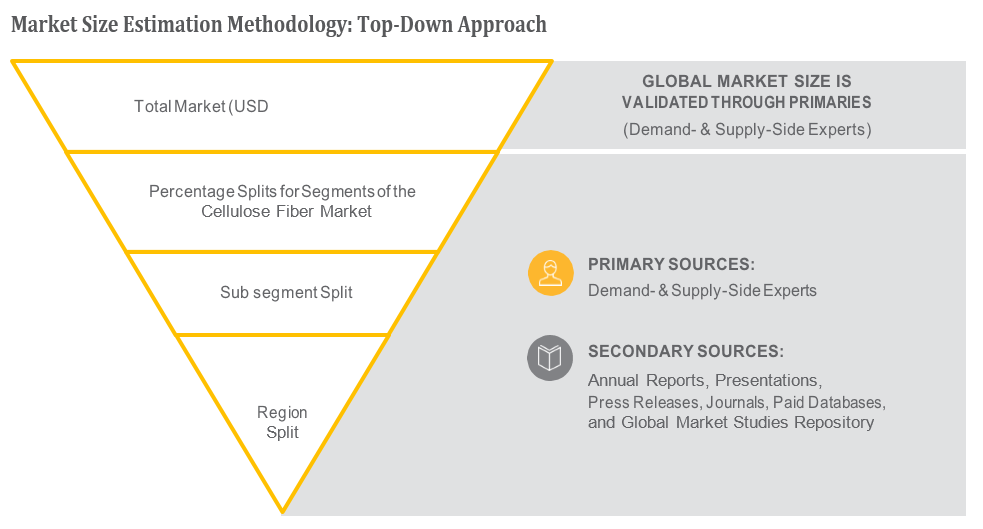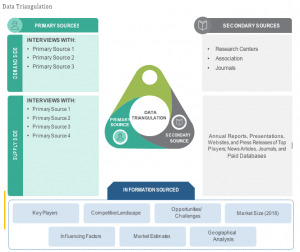OVERVIEW
The Optical Satellite Market is currently valued at USD 282 million in 2024 and will be growing at a CAGR of 32.1% over the forecast period to reach an estimated USD 1134 million in revenue in 2029. The optical satellite market is a dynamic sector characterized by the production and deployment of satellites equipped with optical imaging systems for various applications. These satellites leverage advanced optical technology to capture high-resolution images of the Earth’s surface, enabling crucial functionalities such as environmental monitoring, urban planning, agriculture management, and defense surveillance. With the growing demand for real-time, high-quality geospatial data across industries, the optical satellite market continues to witness significant growth and innovation. Key players in this market include established aerospace companies, as well as startups focused on developing cutting-edge optical imaging technologies and satellite platforms to meet evolving customer needs and market demands.
Firstly, the increasing demand for high-resolution geospatial data across multiple sectors, including agriculture, defense, urban planning, and disaster management, serves as a significant driver. This demand is fueled by the need for precise and up-to-date information for decision-making and resource management. Additionally, advancements in optical imaging technology, including higher resolution sensors, enhanced spectral capabilities, and improved data processing algorithms, drive innovation and expand the potential applications of optical satellites. Moreover, the growing awareness of environmental sustainability and the need for effective monitoring and management of natural resources further boost the adoption of optical satellite solutions for environmental monitoring and climate change research. Furthermore, the rising investments in space exploration and satellite deployment by both government agencies and private entities contribute to the expansion of the optical satellite market, fostering competition, innovation, and the development of cost-effective solutions.
Table of Content
Market Dynamics
Drivers:
Firstly, the increasing demand for high-resolution geospatial data across multiple sectors, including agriculture, defense, urban planning, and disaster management, serves as a significant driver. This demand is fueled by the need for precise and up-to-date information for decision-making and resource management. Additionally, advancements in optical imaging technology, including higher resolution sensors, enhanced spectral capabilities, and improved data processing algorithms, drive innovation and expand the potential applications of optical satellites. Moreover, the growing awareness of environmental sustainability and the need for effective monitoring and management of natural resources further boost the adoption of optical satellite solutions for environmental monitoring and climate change research. Furthermore, the rising investments in space exploration and satellite deployment by both government agencies and private entities contribute to the expansion of the optical satellite market, fostering competition, innovation, and the development of cost-effective solutions.
Key Offerings:
Key offerings in the optical satellite market encompass a range of satellite-based solutions designed to meet diverse user requirements. These offerings include advanced optical imaging systems capable of capturing high-resolution imagery with precision and clarity, enabling applications such as environmental monitoring, disaster management, urban planning, and agricultural assessment. Additionally, key offerings often incorporate data processing and analytics capabilities, allowing users to extract valuable insights from the vast amount of imagery collected by the satellites. Furthermore, comprehensive satellite services may include mission planning, satellite deployment, and ongoing technical support to ensure seamless integration and operation for clients across various sectors, including government, commercial, and scientific research. Through continuous innovation and collaboration, providers in the optical satellite market strive to deliver reliable, scalable, and cost-effective solutions to address the evolving needs of their customers and drive progress in Earth observation capabilities.
Restraints :
The optical satellite business has a lot of room to grow, but there are a few obstacles in the way. The large initial outlay needed for satellite development, launch, and upkeep is one major barrier. This financial barrier, especially for startups and organisations with limited resources, might prevent new players from entering the market and limit the expansion of existing ones. Furthermore, in some areas, regulatory issues like spectrum allocation and licencing regulations may make it difficult to enter specific markets and do business. Moreover, adoption of optical satellite solutions may be hindered by worries about data security and privacy, especially in applications requiring government contracts or sensitive information. Furthermore, there is a safety risk to satellite operations from the growing threat of space debris and accidents, which will affect market growth overall and need expensive mitigation efforts. Finally, market dynamics may be disrupted and uncertainty introduced by geopolitical tensions and international legislation controlling space activities, which could have an impact on industry collaboration opportunities and investment decisions. All things considered, these limitations highlight the intricacy and difficulties the optical satellite industry has in its pursuit of sustainable expansion and innovation.
Regional Information:
• The optical satellite market exhibits regional variations driven by factors such as economic development, technological infrastructure, and specific regional needs. In North America, the market is characterized by a strong presence of established aerospace companies and a robust ecosystem supporting satellite innovation and deployment. The region leads in the adoption of advanced optical imaging technologies, particularly in applications such as defense, agriculture, and environmental monitoring.
• In Europe, a focus on environmental sustainability drives investments in optical satellite solutions for climate change research, land management, and disaster response. Additionally, the European Space Agency (ESA) plays a pivotal role in fostering collaboration and innovation within the region’s satellite industry.
• Asia-Pacific experiences rapid growth in the optical satellite market, driven by the emergence of several space-faring nations such as China, India, and Japan. These countries invest significantly in satellite technology for various purposes, including national security, infrastructure development, and natural resource management.
Recent Developments:
• In June 2023, Mynaric AG was selected by Raytheon Technologies to supply optical communications terminals for the Space Development Agency (SDA) Tranche 1 Tracking Layer program. The program aims to detect, identify, and track hypersonic weapons and advanced missiles from their earliest stages of launch through interception using a low-Earth orbit constellation of networked satellites. Mynaric will supply 21 CONDOR Mk3 terminals to Raytheon for the program, and each satellite will feature three optical communications terminals, as well as a Ka-band, multi-beam payload for communications.
• In May 2023, Sidus Space, a Space, and Defense-as-a-Service satellite company, has chosen ATLAS Space Operations to expand its ground station services for the LizzieSat™ constellation. This partnership will increase global coverage and data speed, benefiting the Space and Defense-as-a-Service solutions offered by Sidus Space. The expanded ground site network is expected to reduce latency and enhance data transfer capabilities.
Key Market Players:
Airbus Defence and Space, Ball Aerospace, Boeing Space and Defense, Lockheed Martin Space Systems, Maxar Technologies, Northrop Grumman Corporation, Thales Alenia Space, and Surrey Satellite Technology Ltd.
Frequently Asked Questions
1) What is the projected market value of the Optical Satellite Market?
– The Optical Satellite Market is expected to reach an estimated value of USD 1134 million in revenue by 2029.
2) What is the estimated CAGR of the Optical Satellite Market over the 2024 to 2029 forecast period?
– The CAGR is estimated to be 32.1% for the Optical Satellite Market over the 2024 to 2029.
3) Who are the key players in the Optical Satellite Market?
– Airbus Defence and Space, Ball Aerospace, Boeing Space and Defense, Lockheed Martin Space Systems, Maxar Technologies, Northrop Grumman Corporation, Thales Alenia Space, and Surrey Satellite Technology Ltd.
4) What are the drivers for the Optical Satellite Market?
– The demand for high-resolution geospatial data in sectors like agriculture, defense, urban planning, and disaster management drives innovation in optical satellites. Advancements in optical imaging technology and environmental sustainability awareness further boost adoption. Investments in space exploration and satellite deployment foster competition, innovation, and cost-effective solutions in the optical satellite market.
5) What are the restraints and challenges in the Optical Satellite Market?
– The optical satellite market faces financial barriers, regulatory challenges, data privacy concerns, space debris threats, and geopolitical tensions. High initial investment, regulatory challenges, and data privacy concerns can limit market expansion. Additionally, space debris and collisions pose safety risks, necessitating costly mitigation measures. Geopolitical tensions and international regulations can disrupt market dynamics, affecting investment decisions and collaboration opportunities.
6) What are the key applications and offerings of the Optical Satellite Market?
– The optical satellite market offers various satellite-based solutions, including advanced imaging systems for environmental monitoring, disaster management, urban planning, and agricultural assessment. These solutions also include data processing and analytics capabilities, mission planning, satellite deployment, and technical support. Providers aim to deliver reliable, scalable, and cost-effective solutions to meet evolving customer needs and advance Earth observation capabilities.
7) Which region is expected to drive the market for the forecast period?
– North America is expected to have the highest market growth from 2024 to 2029
Why Choose Us?
Insights into Market Trends: Global Market Studies reports provide valuable insights into market trends, including market size, segmentation, growth drivers, and market dynamics. This information helps clients make strategic decisions, such as product development, market positioning, and marketing strategies.
Competitor Analysis: Our reports provide detailed information about competitors, including their market share, product offerings, pricing, and competitive strategies. This data can be used to inform competitive strategies and to identify opportunities for growth and expansion.
Industry Forecasts: Our reports provide industry forecasts, which will inform your business strategies, such as investment decisions, production planning, and workforce planning. These forecasts can help you to prepare for future trends and to take advantage of growth opportunities.
Access to Industry Experts: Our solutions include contributions from industry experts, including analysts, consultants, and subject matter experts. This access to expert insights can be valuable for you to understand the market.
Time and Cost Savings: Our team at Global Market Studies can save you time and reduce the cost of conducting market research by providing comprehensive and up-to-date information in a single report, avoiding the need for additional market research efforts.












